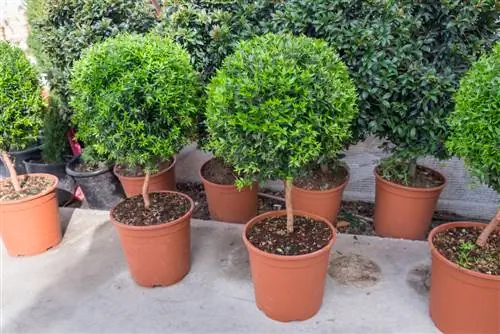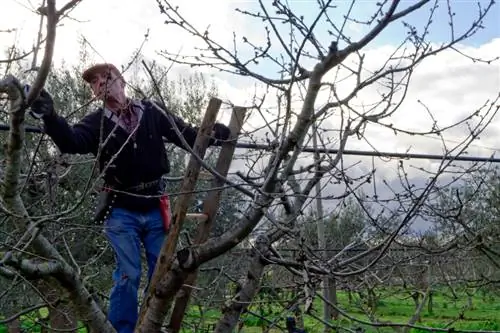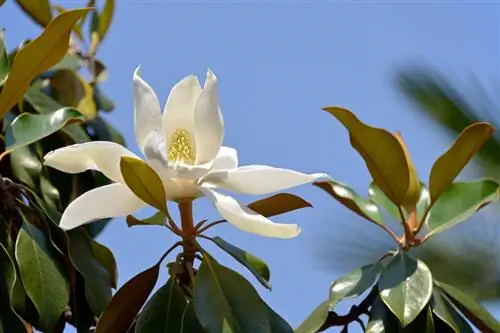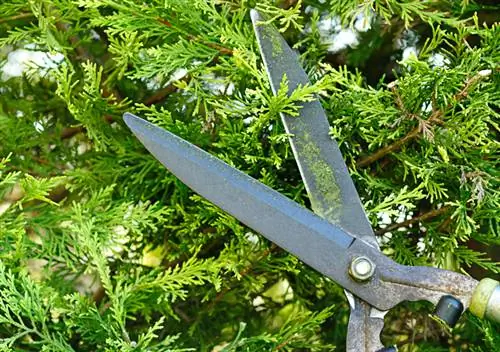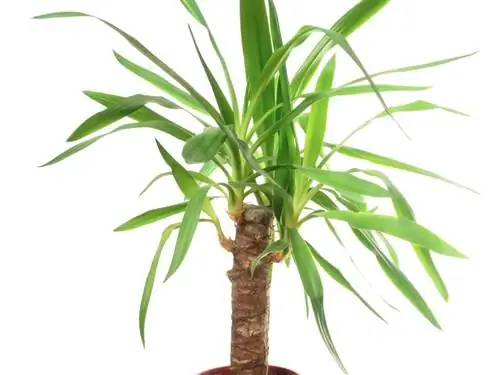- Author admin [email protected].
- Public 2023-12-16 16:46.
- Last modified 2025-01-23 11:22.
This plant, which comes from the Mediterranean region, exudes a Mediterranean atmosphere as a houseplant and ornamental plant. In the summer months the bucket goes on the balcony or terrace. Regular cuts are necessary so that the shrub maintains its vigor and does not lose its shape.
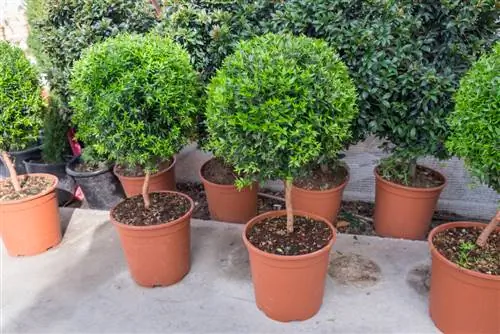
When and how should you prune a myrtle?
Myrtles should be pruned in late winter through spring or after flowering. Shorten new growth to one or two leaves, break out shoot tips to create a bushy shape and shorten woody shoots with pruning shears or bonsai scissors.
Time
Myrtles grow at different rates, so the date for the first cut varies greatly depending on the specimen. Variety and vitality play an equally important role here as do external factors. With good care and optimal site conditions, some plants grow by half a meter in just a few months, while other specimens grow a few centimeters in the same time. Therefore, you should base the cutting date on when your plant has reached the required shoot length.
Spring and autumn pruning
Basically you can cut the plant in late winter to spring. For particularly fast-growing varieties, further intervention in autumn is recommended. If you value the development of abundant flowers, you should avoid using scissors after the end of April. Pruning measures may be carried out again after the flowering period.
Techniques
Myrtles prove to be easy-to-shape shrubs. They can be used to create spherical trees or complex geometric shapes as well as upholstery or bonsai. Regardless of the shape you prefer, these basic rules apply:
- Carry out the first pruning when the lower parts of the branches are woody
- these should have at least five to seven pairs of leaves
- shorten annual new growth to one or two pairs of leaves
Blending
If the ornamental plants have grown too densely so that there is not enough light inside, myrtles tend to become bald. To prevent leaf loss, thin out the branch cushions a little more. Remove specimens that are growing too intensively and shorten the remaining branches. Place the scissors about one to two millimeters above the leaf axil. After cutting, at least one pair of leaves should remain on each shoot.
Topiary
Regular pruning ensures that the myrtle retains its shape. Be careful with more intensive pruning measures, as excessively intensive practices disrupt flower formation. Radical cuts are an exception in bonsai design if the crown area has to be rebuilt due to baldness.
Ideally, you should reduce the shaping care measures to the regular breaking out of the shoot tips. The bush then sprouts the buds underneath and develops a dense and bushy shape.
Tip
Pruning with scissors is necessary and recommended if individual branches grow too vigorously and disrupt the symmetry. You should only remove annual shoots and shorten perennial specimens.
Tools
Short unwoody myrtle shoots with a sharp knife or bonsai scissors. As soon as the tissue is woody, grab secateurs or electric bonsai scissors. Particularly thick branches require the use of pruning shears or a saw.

